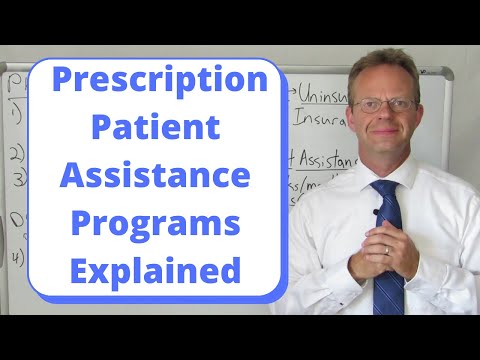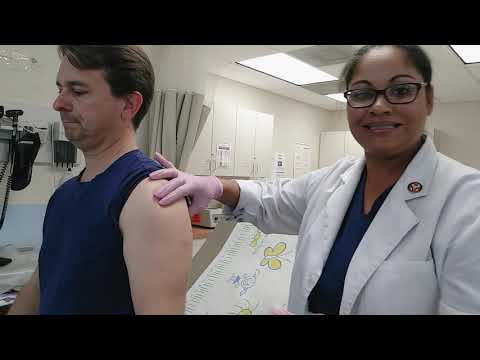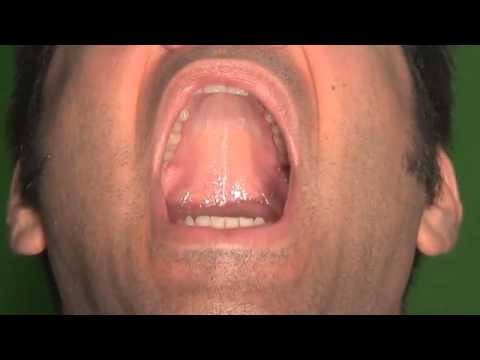Patient Assistance for Medications: What You Need to Know
Contents
- Introduction: what is patient assistance for medications, and why is it important?
- What are the eligibility requirements for patient assistance programs?
- How do patient assistance programs work?
- What are the benefits of patient assistance programs?
- What are the drawbacks of patient assistance programs?
- How can patients find out more about patient assistance programs?
- What are some tips for getting the most out of patient assistance programs?
- Are there any other resources available to help with the cost of medications?
- Conclusion: what are the key things to know about patient assistance for medications?
- Further reading: additional resources on patient assistance for medications
Many people who need help paying for their medications turn to patient assistance programs (PAPs) for help. Here’s what you need to know about these programs.
Checkout this video:
Introduction: what is patient assistance for medications, and why is it important?
patient assistance programs (PAPs) are programs created by pharmaceutical companies to provide free or low-cost drugs to people who are unable to afford them. These programs are typically need-based, and may have income requirements and other eligibility criteria.
PAPs are an important safety net for people who need medications but cannot afford them. In some cases, PAPs may be the only way for people to get the medications they need.
There are a few things to keep in mind when considering a PAP:
-PAPs are usually need-based, so you will likely have to provide proof of income and other financial information.
-PAPs often have specific eligibility requirements, such as being a certain age or having a certain medical condition
-PAPs usually have a limited time frame during which you can receive assistance.
-PAPs may only cover certain medications, or they may only cover a portion of the cost of the medication.
What are the eligibility requirements for patient assistance programs?
Most patient assistance programs are sponsored by pharmaceutical companies to help low-income, uninsured, and underinsured patients get free or discounted medications. To be eligible for assistance, patients must meet certain criteria, which vary by program. For example, patients may need to have a household income below a certain level, be a US citizen or legal resident, and be uninsured or underinsured. Some programs also have age limits.
How do patient assistance programs work?
Most pharmaceutical companies offer patient assistance programs (PAPs) to help low-income, uninsured, and underinsured patients get access to life-saving medications. These programs provide free or discounted medications to those who qualify.
To be eligible for a PAP, patients must meet certain income and other requirements. Each PAP has its own specific eligibility criteria, so it is important to check with the program before applying. Generally speaking, most PAPs require that patients have a household income at or below 250% of the federal poverty level and do not have insurance that covers the cost of the medication.
Patients who qualify for a PAP will be asked to provide proof of financial need, such as tax returns, pay stubs, or other financial documentation. Once approved, patients will receive a card from the program that they can use to get their medication at a participating pharmacy. Some programs also cover the cost of shipping.
If you think you might be eligible for a patient assistance program, talk to your doctor or case manager about your options. They can help you apply for the program that is right for you.
What are the benefits of patient assistance programs?
Patient assistance programs (PAPs) are programs offered by pharmaceutical companies to help make prescription medications more affordable for people who are struggling to pay for them. In most cases, these programs provide medications for free or at a reduced cost.
PAPs can be a great way to reduce your out-of-pocket costs for medication, but it’s important to be aware of the eligibility requirements and application process for each program. Some programs may only provide assistance for certain medications, and you may need to meet certain income requirements to qualify.
If you think you might benefit from a patient assistance program, talk to your doctor or case manager about your options. They can help you determine if you’re eligible and assist you with the application process.
What are the drawbacks of patient assistance programs?
Patient assistance programs are a great way to get the medications you need if you cannot afford them. However, there are some drawbacks to these programs that you should be aware of before you enroll in one.
First, while most patient assistance programs will help you pay for your medications, they will not cover the entire cost. You will still have to pay some out-of-pocket expenses, which can be a financial burden if you are already struggling to make ends meet.
Second, some patient assistance programs only cover certain medications. If you need medication for a condition that is not covered by the program, you will have to pay for it yourself. This can be a problem if you have multiple chronic conditions that require different medication.
Third, patient assistance programs can be complex and difficult to navigate. There may be a lot of paperwork involved, and it can be hard to keep track of everything. This can be especially difficult if you are also dealing with a serious medical condition.
Fourth, patient assistance programs usually have strict eligibility requirements that must be met in order to enroll. This means that not everyone who needs help will be able to get it.
Despite these drawbacks, patient assistance programs can be a lifeline for people who cannot afford their medications. If you think you might benefit from one of these programs, talk to your doctor or case worker about what options are available to you.
How can patients find out more about patient assistance programs?
There are many ways to find out about patient assistance programs. Some pharmaceutical companies have Web sites that provide information about their programs. The Partnership for Prescription Assistance also has a Web site, www.pparx.org, which provides a single point of access to more than 475 public and private patient assistance programs, including more than 150 programs offered by pharmaceutical companies.
In addition, many state governments have Web sites that provide information about patient assistance programs. For example, the State of New York Office of the Attorney General maintains a Web site, http://www.oag.state.ny.us/bureaus/healthcare/patients/patients.html, which has links to patient assistance program information maintained by a number of pharmaceutical companies and other organizations.
Patients can also call the Partnership for Prescription Assistance toll-free number, 1-888-477-2669, to speak with someone who can help them find out if they qualify for any patient assistance programs.
What are some tips for getting the most out of patient assistance programs?
Patient assistance programs are designed to help patients with limited income and resources get the medications they need for free or at a reduced cost. Many patient assistance programs are offered by pharmaceutical companies, but there are also some government-funded programs. Here are some tips for getting the most out of patient assistance programs:
1. Start by contacting the pharmaceutical company that makes the medication you need. Some patient assistance programs are general, while others are specific to certain drugs.
2. Be sure to have your financial information ready when you call. Most patient assistance programs require proof of financial need, such as income tax returns, pay stubs, or social security award letters.
3. Be prepared to answer questions about your medical condition and why you need the medication. Pharmaceutical companies want to make sure that their medications are being used by people who will benefit from them.
4. Ask about any other requirements for the program, such as submitting physician’s forms or getting laboratory tests done. Be sure you understand all the requirements before you apply.
5. Find out how long the process will take and when you can expect to receive your medication. Some patient assistance programs can take several weeks or months to process an application, so it’s important to plan ahead.
Applying for patient assistance can be a time-consuming process, but it’s worth it if you’re able to get the medication you need at a reduced cost or for free. If you have any questions about how to apply for patient assistance, speak with your doctor or another healthcare professional who is familiar with these programs
Are there any other resources available to help with the cost of medications?
There are a few other resources that may be able to help with the cost of medications. These include:
-Patient assistance programs offered by pharmaceutical companies
-Discount programs offered by some pharmacies
-Assistance from state or local governments
-Charitable organizations
Conclusion: what are the key things to know about patient assistance for medications?
PATIENT ASSISTANCE FOR MEDICATIONS: WHAT YOU NEED TO KNOW
The cost of medications can be a barrier to treatment for many patients. Fortunately, there are programs that can help patients with the cost of their medications. Patient assistance programs (PAPs) are offered by pharmaceutical companies to help patients who cannot afford their medications. PAPs typically provide free or low-cost medications to people who meet certain eligibility requirements.
To be eligible for a PAP, patients must usually have a valid prescription for the medication, be a US citizen or legal resident, and have an annual household income below a certain level. Patients may also need to provide proof of financial need, such as tax return forms or pay stubs.
Once patients are approved for a PAP, they will usually receive their medications for free or at a very reduced cost. Some PAPs also cover other costs related to the medication, such as co-pays or insurance premiums. PAPs are generally available for all FDA-approved medications.
Patients who need help paying for their medications should speak to their doctor or case worker about patient assistance programs.
Further reading: additional resources on patient assistance for medications
There are many organizations that offer financial assistance for prescription medications. Here are a few to get you started:
-NeedyMeds: Provides information on patient assistance programs and free or low-cost clinics.
-RxAssist: Offers a searchable database of patient assistance programs.
-PPAG: The Partnership for Prescription Assistance helps low-income, uninsured patients get free or low-cost medications.
-NORD: The National Organization for Rare Disorders provides information on assistance programs for rare disorders.







